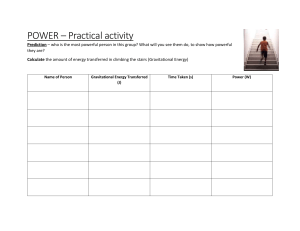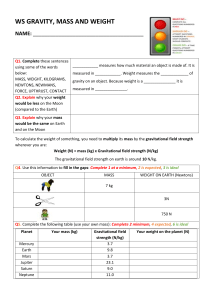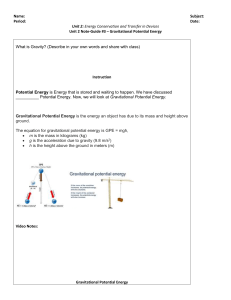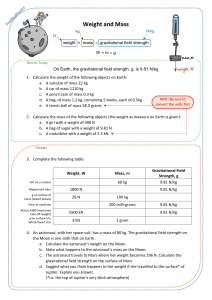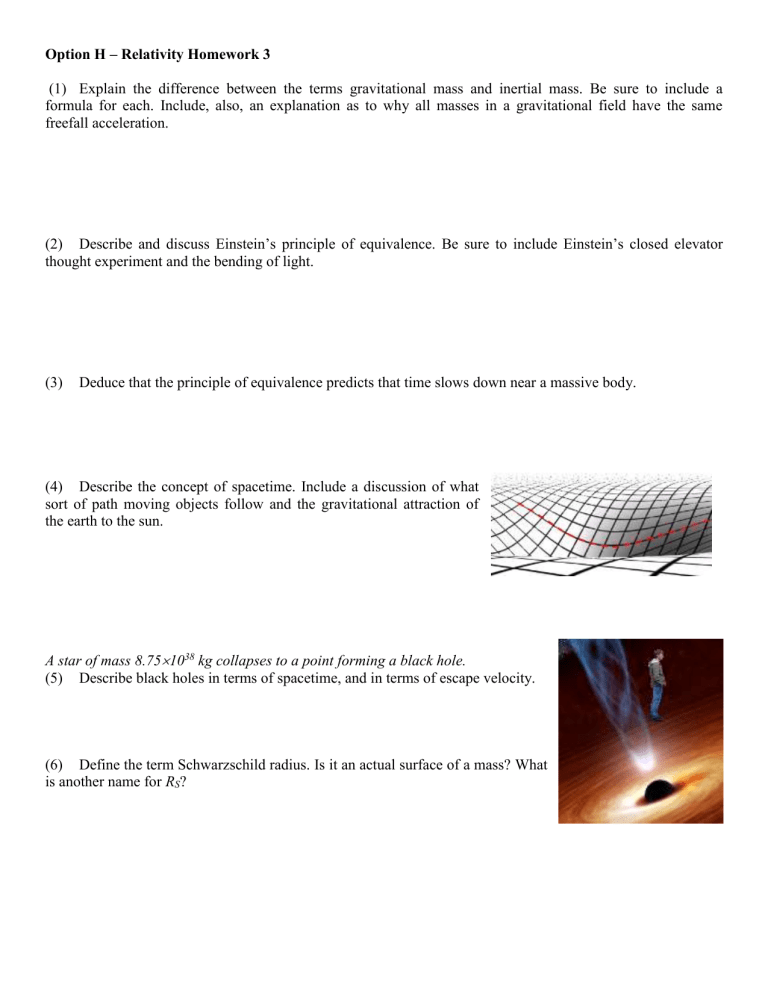
Option H – Relativity Homework 3 (1) Explain the difference between the terms gravitational mass and inertial mass. Be sure to include a formula for each. Include, also, an explanation as to why all masses in a gravitational field have the same freefall acceleration. (2) Describe and discuss Einstein’s principle of equivalence. Be sure to include Einstein’s closed elevator thought experiment and the bending of light. (3) Deduce that the principle of equivalence predicts that time slows down near a massive body. (4) Describe the concept of spacetime. Include a discussion of what sort of path moving objects follow and the gravitational attraction of the earth to the sun. A star of mass 8.751038 kg collapses to a point forming a black hole. (5) Describe black holes in terms of spacetime, and in terms of escape velocity. (6) Define the term Schwarzschild radius. Is it an actual surface of a mass? What is another name for RS? (7) What is the Schwarzschild radius of the black hole? What is the event horizon of the black hole? (8) An astronaut in orbit about the black hole is orbiting at a radius of r = 1.50RS. An observer far away watches him celebrate two consecutive birthday parties. How much has the observer aged in that one astronaut year? These questions concern the gravitational red shift. (9) Describe the concept of red shift in terms of two observers of a light source located a distance h from each other. (10) How does this imply the existence of a gravitational red shift? In other words, how can we say that an accelerating spacecraft will have exactly the same red shift as a stationary one in a gravitational field. (11) The photons used in the Pound-Rebka experiment had 14.4 keV energy. Suppose the building was 1275 m high. Calculate the change in frequency between the top and bottom of the building. Assume the value of g is 9.81 ms-2.

